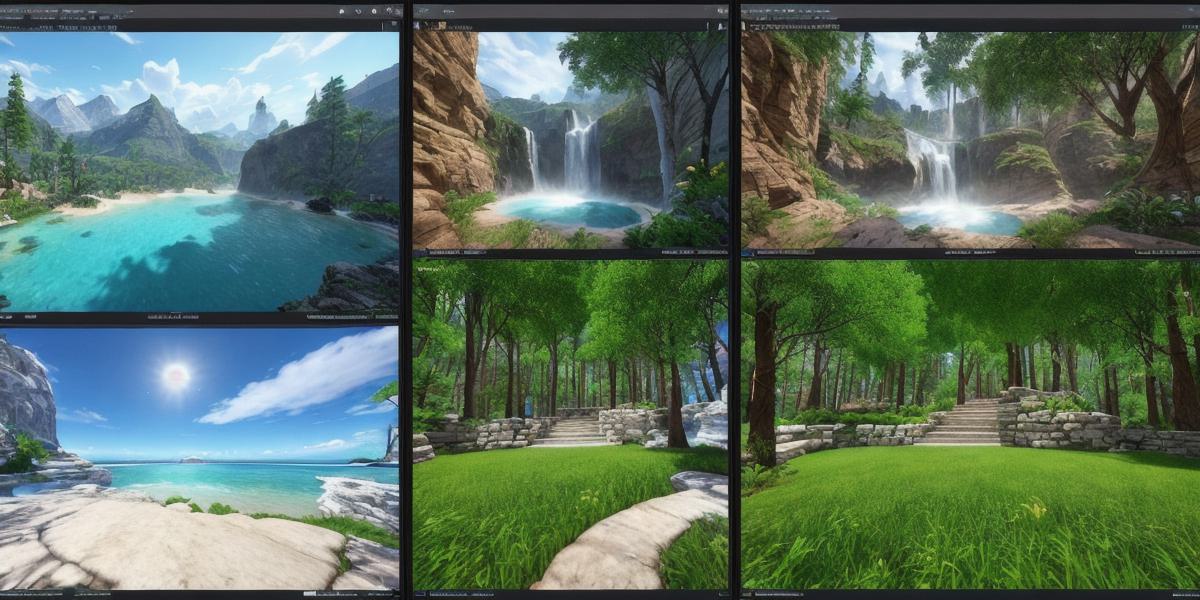Blender vs Unreal Engine: Which Software Reigns Supreme?

In today’s world, 3D graphics have become an essential tool for developers, designers, and artists alike. Two of the most popular software used in this field are Blender and Unreal Engine. In this article, we will compare and contrast these two tools to help you determine which one is best suited for your needs.
The Battle between Blender and Unreal Engine
Blender is a free and open-source 3D creation software that offers users a comprehensive set of tools for modeling, animation, rendering, and simulation. It is designed to be user-friendly and versatile, with a large and active community that continuously contributes new features and add-ons.
On the other hand, Unreal Engine is a commercial game engine developed by Epic Games. It offers users a powerful set of tools for creating interactive experiences, including games, virtual reality (VR), augmented reality (AR), and 3D visualization. Unreal Engine has become a popular choice among professional developers due to its easy-to-use interface, advanced features, and extensive support resources.
The Pros and Cons of Blender
Blender has several advantages that make it an excellent choice for many users. One of the biggest benefits is that it is completely free to use, which means you don’t have to worry about expensive licenses or subscription fees. Additionally, Blender is highly customizable, allowing users to add their own features and tools to suit their needs.
Another advantage of Blender is its wide range of features, including sculpting, animation, and simulation. It also offers strong support for rendering, with a variety of render engines available, including Cycles and Eevee.
However, there are some drawbacks to using Blender. One of the biggest challenges is that it has a steep learning curve, especially for beginners. The software can be overwhelming and confusing at first, making it difficult to get started. Additionally, Blender’s open-source nature means that support resources may not be as comprehensive as those offered by commercial software.
The Pros and Cons of Unreal Engine
Unreal Engine is a powerful and versatile tool that offers users a wide range of features for creating interactive experiences. One of the biggest benefits of Unreal Engine is its ease of use, with a simple and intuitive interface that allows developers to get started quickly.
Another advantage of Unreal Engine is its advanced features, including physics simulation, dynamic lighting, and real-time rendering. It also offers extensive support resources, including documentation, tutorials, and forums, which makes it easy to learn and use the software.
However, there are some drawbacks to using Unreal Engine. One of the biggest challenges is that it can be expensive, with a license costing $199 per user per year. Additionally, Unreal Engine’s commercial nature means that support resources may not be as comprehensive as those offered by open-source software like Blender.
The Final Verdict: Which Software Reigns Supreme?
Ultimately, the choice between Blender and Unreal Engine depends on your specific needs and preferences. If you are a beginner or working on a small project with limited resources, Blender may be the best choice due to its affordability and flexibility. However, if you need advanced features and support resources, and are willing to pay for a commercial software package, Unreal Engine may be the way to go.
In conclusion, both Blender and Unreal Engine have their strengths and weaknesses, but they are both powerful tools that can help developers create stunning 3D graphics and interactive experiences. By carefully considering your needs and priorities, you can choose the software that is best suited for your project and achieve your creative vision.








